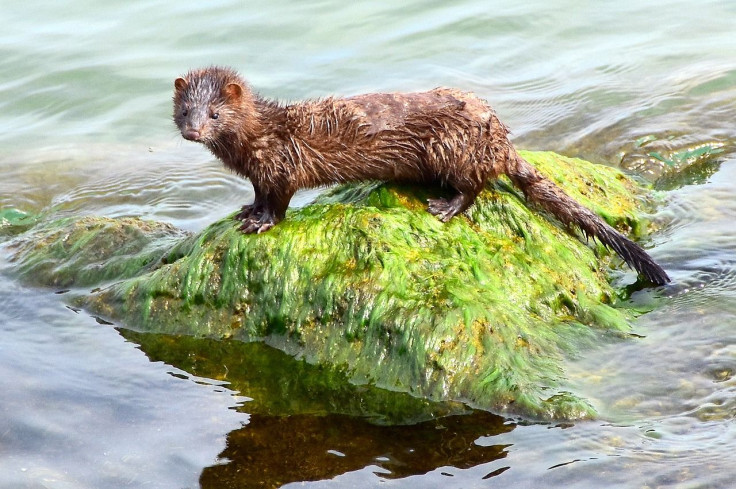Utah Mink Is First Wild Animal To Test Positive For COVID-19
KEY POINTS
- A wild mink in Utah has tested positive for COVID-19
- Other animals in the area tested negative
- The risk of animals spreading COVID-19 is "low," according to the CDC
Authorities have confirmed the first case of COVID-19 in a wild animal.
On Monday, the U.S. Department of Agriculture (USDA) announced that a "free-ranging, wild mink" in Utah has tested positive for SARS-CoV-2, making it the first known case of COVID-19 in a wild animal. It was discovered when authorities were screening the wildlife around infected mink farms in Utah, Michigan and Wisconsin. Sequencing of the viral genome from the wild mink revealed that it was "indistinguishable" from the ones obtained from the farmed mink.
The department said there is "currently no evidence" that the virus is already circulating or is established in the wild populations, noting that all the other animals, from different species, that were tested came up negative for the virus. Utah state veterinarian, Dean Taylor, told National Geographic that the animal that tested positive was in the "immediate vicinity" of a farm affected by an outbreak.
Minks have recently been in the spotlight after Denmark culled millions of farmed minks due to fears of a mutated version of the coronavirus. There have also been COVID-19 outbreaks on mink farms in other countries. In the U.S., for instance, there have so far been outbreaks on 16 mink farms in Wisconsin, Utah, Oregon and Michigan, with Utah having the most cases, National Geographic reported.

The COVID-19-positive case in a wild mink was reported just days after authorities confirmed that a sixth animal species had tested positive for the virus. A snow leopard at the Louisville Zoo in Kentucky recently tested positive for the virus. Earlier in the year, other animals also tested positive for the coronavirus, including tigers and lions at a zoo in New York.
However, all these were captive animals. Until the new report, COVID-19 had not been found in a non-captive wild animal.
"To prevent the potential establishment of a virus reservoir, efforts to prevent SARS-CoV-2 introduction into and spread within the large North American wild mink population, as well as elsewhere, are warranted," the USDA said.
The risk of animals spreading COVID-19 is "low," according to the Centers for Disease Control and Prevention (CDC).
"At this time, there is no evidence that animals play a significant role in spreading SARS-CoV-2, the virus that causes COVID-19, to people," the CDC said. "Based on the limited information available to date, the risk of animals spreading COVID-19 to people is considered to be low."
As early evidence suggests that it is humans that can transmit the virus to animals, people who have COVID-19 or are suspected to have it are being advised to avoid animals including their pets, livestock and wildlife.
CDC also advises animal owners to keep pet cats indoors instead of letting them roam free, stay two meters away from others when walking dogs, and take precautionary measures when interacting with pets if one of them is sick. They should also talk to a veterinarian regarding any concerns about pets' health.
© Copyright IBTimes 2024. All rights reserved.






















